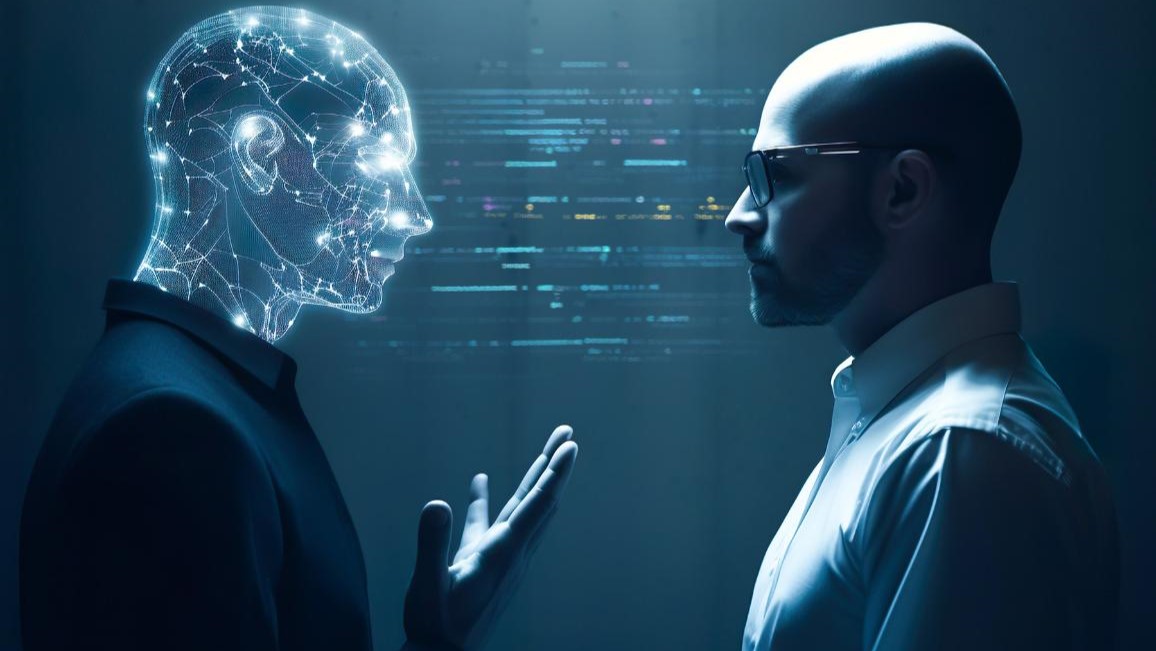New York — Matthew Sherwood, blind for more than 15 years, navigates daily challenges with the aid of his guide dog, Chris. Although he has a flourishing career in investing and a supportive family, tasks such as shopping for clothes still require assistance to ensure he chooses the correct colors and styles.
Artificial intelligence (AI) is poised to transform Sherwood’s life and the lives of many others with disabilities.
Sherwood sometimes uses an app called Be My Eyes, which connects visually impaired users with sighted volunteers through live video to help with various tasks, such as checking if a shirt matches an outfit or verifying the expiration date on a milk carton. However, advancements in AI technology are beginning to minimize the need for human volunteers.
In a groundbreaking collaboration last year, Be My Eyes partnered with OpenAI to integrate AI into its app. Now, the AI model can “see” and describe objects in front of the user, eliminating the necessity for a human volunteer. During a recent OpenAI product demonstration, a user employed the AI-powered Be My Eyes to hail a taxi, with the app precisely guiding the user on when to raise their arm. Google has introduced a similar feature in its Lookout app to assist visually impaired users in various tasks.
These applications exemplify just one facet of how AI is revolutionizing assistive technology, which includes tools designed to aid disabled or elderly individuals. Leading tech companies like Apple and Google have developed a range of AI-driven tools to enhance accessibility, from eye-tracking technology that enables physically disabled users to control their iPhones with their eyes to detailed voice guidance for blind users navigating Google Maps.
Since the advent of ChatGPT, it has become evident that AI will reshape our world, transforming our work, communication, and even our perception of reality. For people with disabilities, AI holds the promise of transformative change in their daily lives.
“If you were in business and blind, you used to need an assistant to read for you,” Sherwood explained. “Now, you have this new power. For blind individuals, it’s an opportunity to gain employment, compete in business, and achieve success.”
The Advantages of AI for Accessibility
For years, tech companies have leveraged early forms of AI to make their products more accessible, such as automated closed captioning on videos and screen readers. However, the recent advancements in AI models, powered by extensive datasets and sophisticated computing systems, are significantly expanding what is possible in assistive technology. For instance, an AI tool designed to help blind individuals hail taxis must accurately recognize what a taxi looks like, which requires training the model with numerous examples.
Google has also enhanced its tools for visually impaired users. Its screen-reading tool now incorporates a “question and answer” feature, using generative AI to provide detailed descriptions of what is displayed on a user’s screen.
“The promise of AI has been apparent for many years, but it needs to reach a high level of quality to be viable in products,” said Eve Andersson, Google’s senior director of product inclusion, equity, and accessibility, in an interview with CNN.
Generative AI tools are particularly promising for accessibility because they are designed to understand and generate information in various formats, including text, audio, photos, and videos. This capability enables AI to serve as an intermediary, converting information into the most suitable format for the user. For example, AI can transform audio into written text for hearing-impaired users.
“People’s accessibility needs are diverse, but many disabilities involve how information is perceived,” Andersson noted. “There are hearing, vision, motor, speech, and cognitive disabilities, each requiring different information modalities. AI excels at translating between these modalities.”
Building Inclusive AI Systems
To ensure AI systems continue to serve all users, ongoing investment is crucial. Because AI models are trained on data created by humans, they can inadvertently replicate human biases. Instances of bias have already surfaced, such as AI image generators struggling with racial concepts and algorithms perpetuating gendered stereotypes in job advertisements.
To address this, companies like Apple, Google, and Microsoft have partnered with researchers at the University of Illinois Urbana-Champaign to develop a diverse training dataset for AI speech recognition tools. The Speech Accessibility Project gathers recordings from volunteers with conditions such as Parkinson’s, Down Syndrome, and ALS. With over 200,000 recordings, the project has reduced the error rate of a sample speech recognition tool from 20% to 12%.
“The more diverse speech we can include in these systems, the better they will understand individuals with non-standard speech,” said Clarion Mendes, a speech-language pathologist leading the project. “Many people face significant barriers to life participation due to their communication challenges. Assistive technology can dramatically enhance their independence and opportunities.”
Andersson emphasized that investing in AI for accessibility is not only ethically right but also makes sound business sense.
“We don’t want to leave people behind. Technology can level the playing field,” she said. “Additionally, there are financial benefits, such as the ability to sell products to government entities and educational institutions.”






